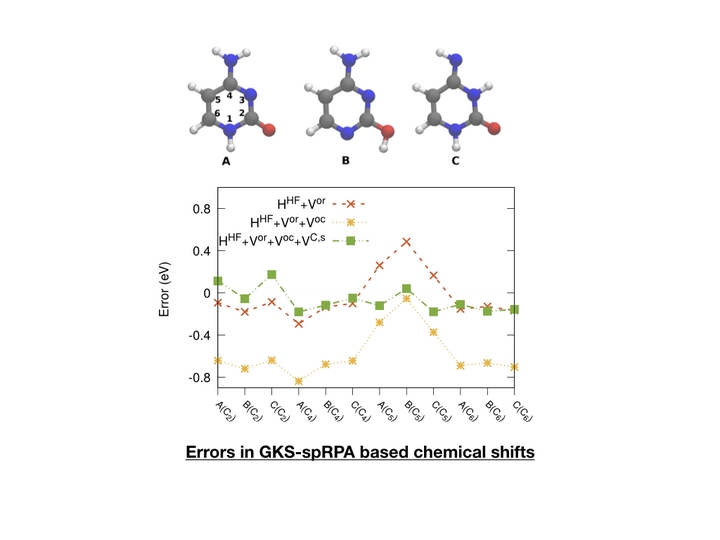X-ray spectroscopic techniques provide local electronic structure information by perturbing core-electrons. X-ray techniques such as XPS, XES and XAS provide information about local-oxidation states, nature of occupied/virtual orbitals, and nature of chemical bonding. These crucial techniques are receiving a leg-up from new generations of synchrotrons and X-ray free-electron lasers which are providing high intensity X-rays.
We are developing models to simulate and understand molecular and liquid-phase X-ray spectra using effective potential models based on the random phase approximation (RPA). These models do not depend on core-hole reference states, and hence overcome the issues with variational instability. We also develop strategies to analyze the variations in core-electron binding energies by partitioning the RPA one-particle Hamiltonians.
